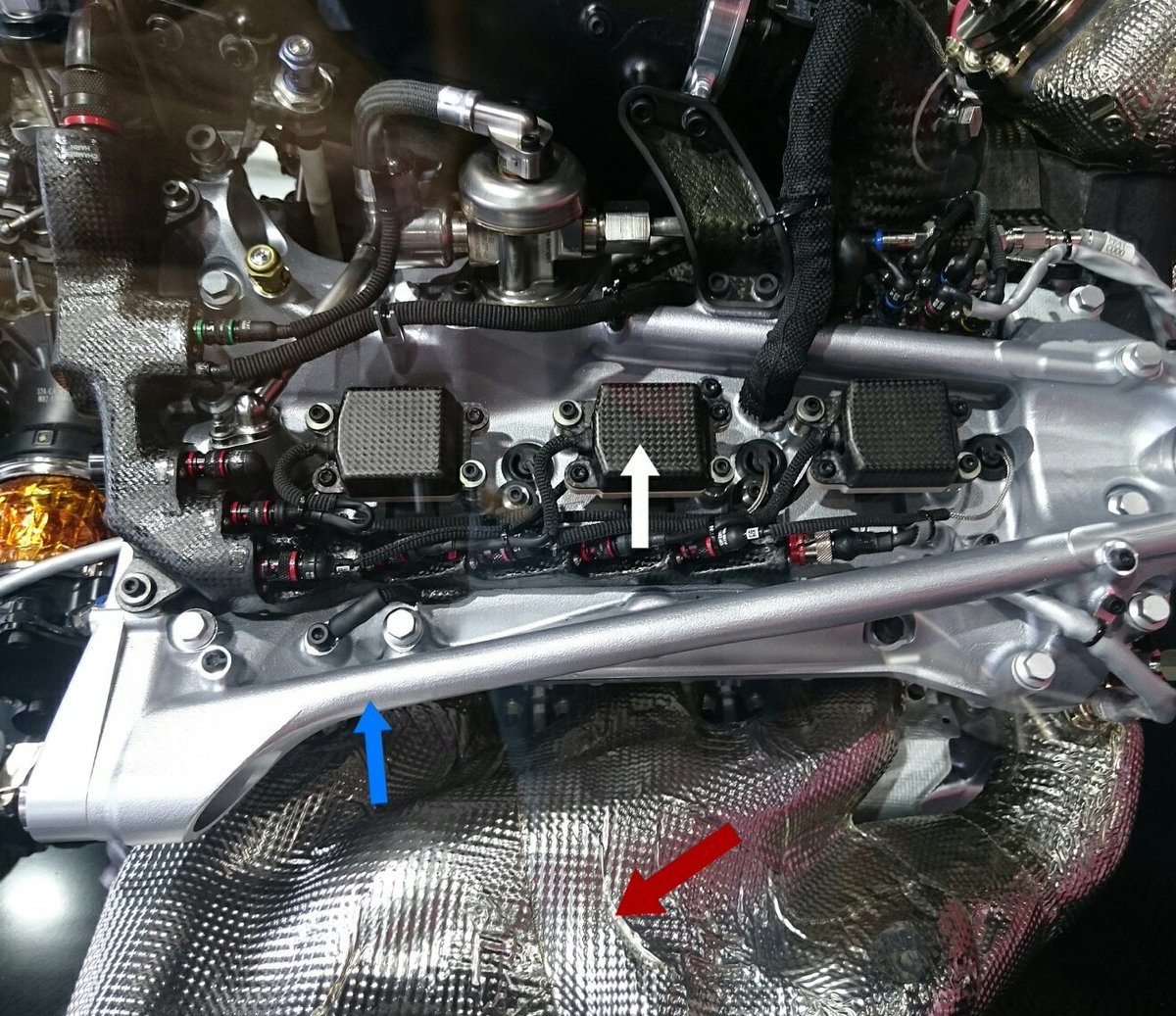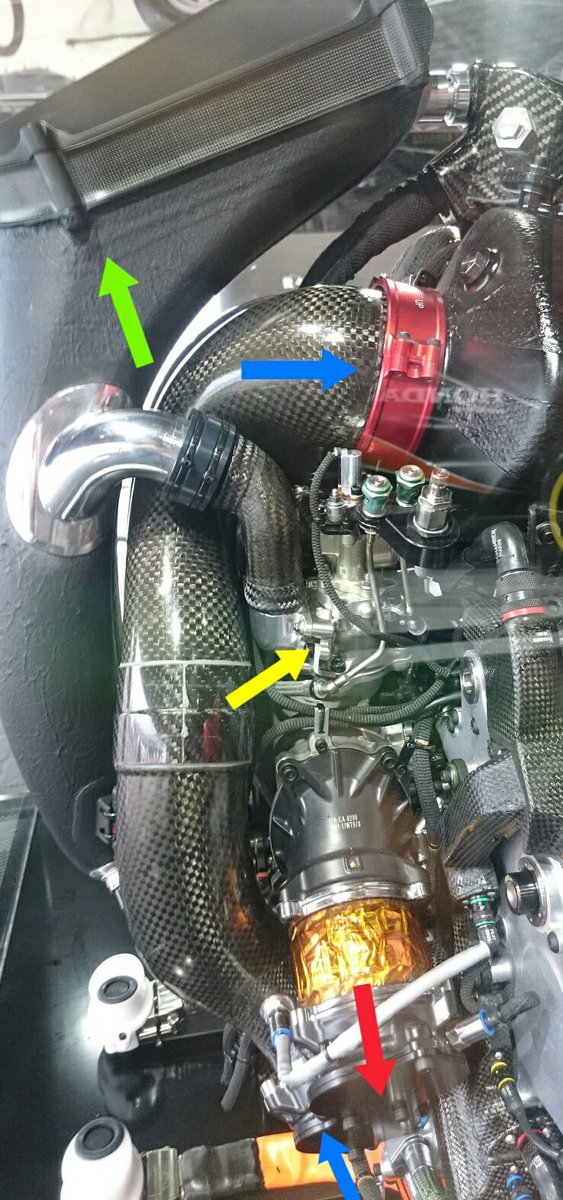



My guess is they are the intake runners for cylinders 2,3,5,6, 1&4 being entirely inside the plenum. The runners are not symmetrical. Runner indicated 4 in the picture seems to have the tightest radius and may feed cyl 2, runner 1 is the next tightest radius and i guess that would feed cylinder 5. Runners indicated 2&3 feeding 6&3 respectively due to 3 being slightly further forward.
HCCI is essentially useless then, unless you're cruising, which F1 cars don't do much of. What is being done is stratified combustion, a small easily ignitable flame ignites a larger less reactive flame. The beauty of RCI is that it's a universal concept, and you don't need two fuels to do it, but it certainly helps. Using a pre-chamber or TJI is still reactivity controlled ignition, in that an area with a rich mixture(higher reactivity) is igniting an area with a lean mixture(lower reactivity). It's all about controlling the reactivity of the fuel to optimize it's burn characteristics, it's also where your CFD makes or breaks you.dren wrote: ↑05 Oct 2017, 14:45That's what is being talked about. HCCI mode in rpm range where it can operate, then it turns into spark ignition in the higher rpm range. It's still an HCCI engine in a given rev range where it actually operates as HCCI.Singabule wrote: ↑05 Oct 2017, 14:43HCCI with spark is not an HCCI anymore. Clearly TJI have an advantage here compared to low speed compression engine. As far as i know HCCI cannot be utilized at high load and high rpm because of fuel need to be ionized and reacted with O2 first and it takes time. No injector could handle very large amount of fuel with super short time at TDC at high speed. Even if there is, will classified as diesel and not as efficient as HCCI. For f1 engine, HCCI is a wet dream TBH

You're right actually, low torque RPM is very important, and I'd imagine these engines have a very nice power band starting as early as 6,500 rpm, although there is still a bit of lag, however if there's less low rpm lag the better. Not only that, you can get the exhaust blowing the diffuser earlier which helps out of corners. Thinking about it, Honda's most recent update at Spa/Monza was centered around improving low rpm torque. Not saying 100% certain you're right but it does draw an interesting coincidence to say the least.
Don't forget that "Low RPM" for these engines is near redline for most road car engines.godlameroso wrote: ↑05 Oct 2017, 17:29You're right actually, low torque RPM is very important, and I'd imagine these engines have a very nice power band starting as early as 6,500 rpm, although there is still a bit of lag, however if there's less low rpm lag the better. Not only that, you can get the exhaust blowing the diffuser earlier which helps out of corners. Thinking about it, Honda's most recent update at Spa/Monza was centered around improving low rpm torque. Not saying 100% certain you're right but it does draw an interesting coincidence to say the least.

At "low rpm" when coming back on throttle they will use the MGUK for torque fill and also use the MGUH to keep the turbo spooled.

That's pretty much a given, the K filling torque. Just curious as to where the low RPM torque boost the size of a small car Honda was claiming came from.MrPotatoHead wrote: ↑05 Oct 2017, 18:11At "low rpm" when coming back on throttle they will use the MGUK for torque fill and also use the MGUH to keep the turbo spooled.
Glorious.
I might have missed that claim... link?dren wrote: ↑05 Oct 2017, 18:13That's pretty much a given, the K filling torque. Just curious as to where the low RPM torque boost the size of a small car Honda was claiming came from.MrPotatoHead wrote: ↑05 Oct 2017, 18:11At "low rpm" when coming back on throttle they will use the MGUK for torque fill and also use the MGUH to keep the turbo spooled.
Glorious.